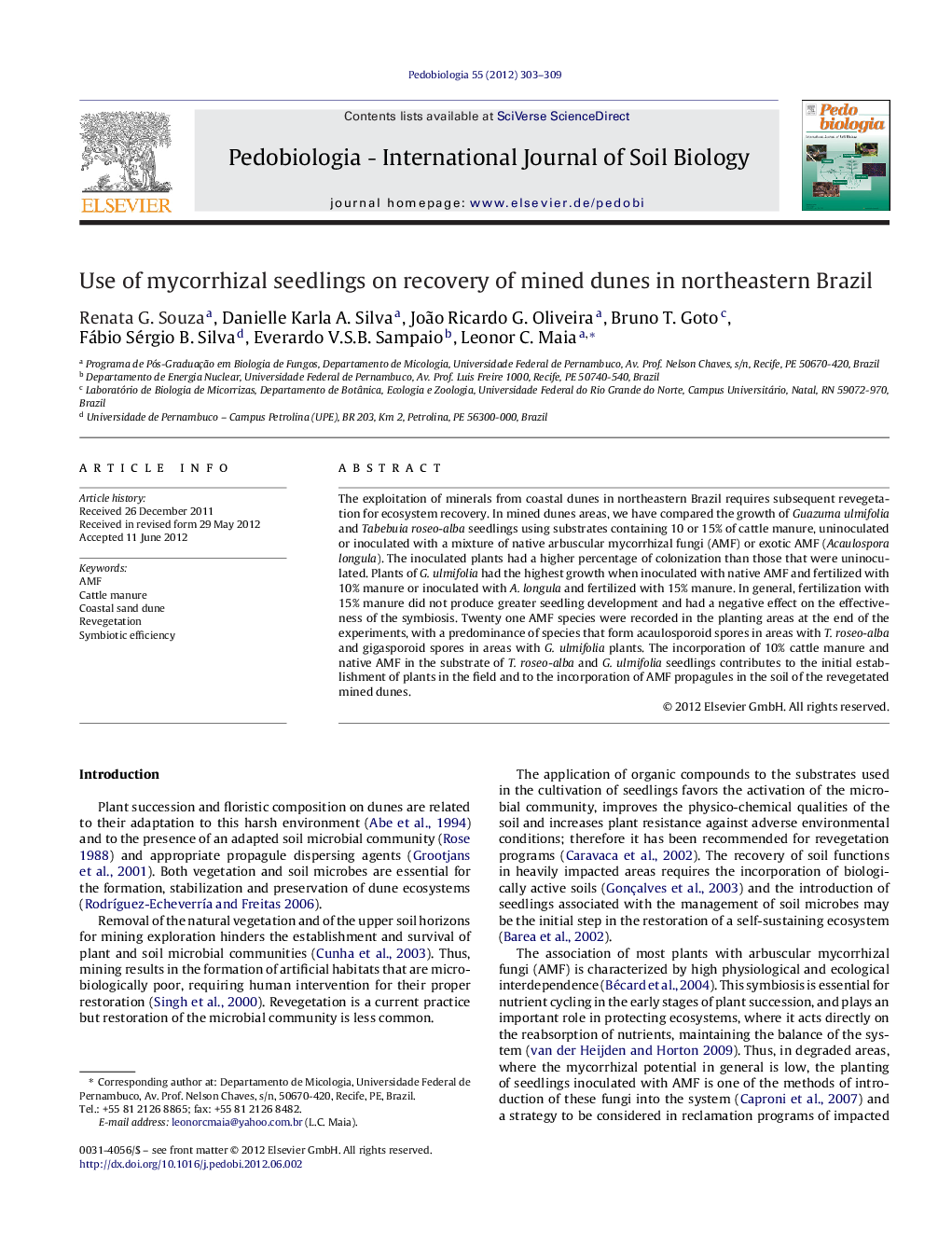| Article ID | Journal | Published Year | Pages | File Type |
|---|---|---|---|---|
| 2061451 | Pedobiologia | 2012 | 7 Pages |
The exploitation of minerals from coastal dunes in northeastern Brazil requires subsequent revegetation for ecosystem recovery. In mined dunes areas, we have compared the growth of Guazuma ulmifolia and Tabebuia roseo-alba seedlings using substrates containing 10 or 15% of cattle manure, uninoculated or inoculated with a mixture of native arbuscular mycorrhizal fungi (AMF) or exotic AMF (Acaulospora longula). The inoculated plants had a higher percentage of colonization than those that were uninoculated. Plants of G. ulmifolia had the highest growth when inoculated with native AMF and fertilized with 10% manure or inoculated with A. longula and fertilized with 15% manure. In general, fertilization with 15% manure did not produce greater seedling development and had a negative effect on the effectiveness of the symbiosis. Twenty one AMF species were recorded in the planting areas at the end of the experiments, with a predominance of species that form acaulosporoid spores in areas with T. roseo-alba and gigasporoid spores in areas with G. ulmifolia plants. The incorporation of 10% cattle manure and native AMF in the substrate of T. roseo-alba and G. ulmifolia seedlings contributes to the initial establishment of plants in the field and to the incorporation of AMF propagules in the soil of the revegetated mined dunes.
